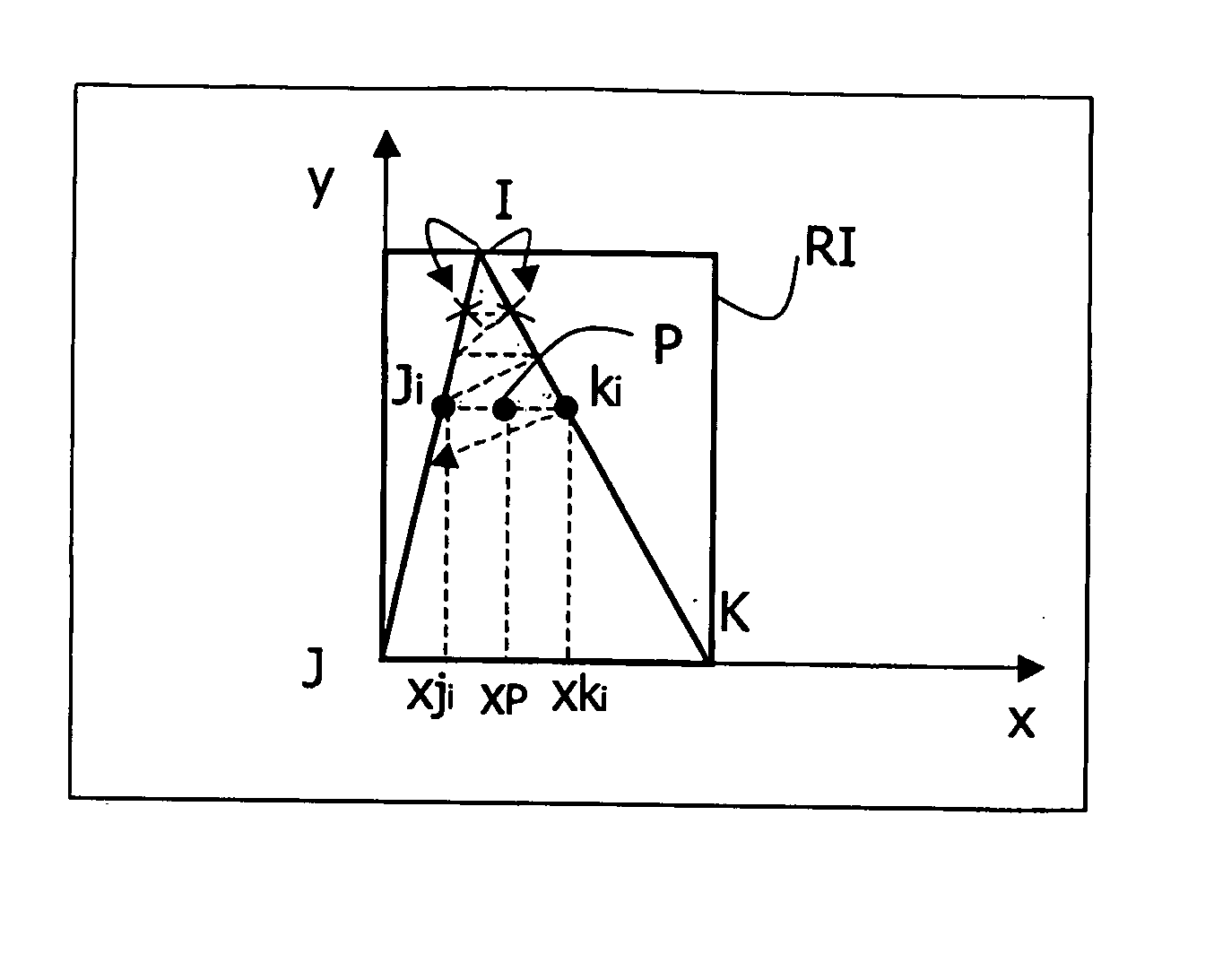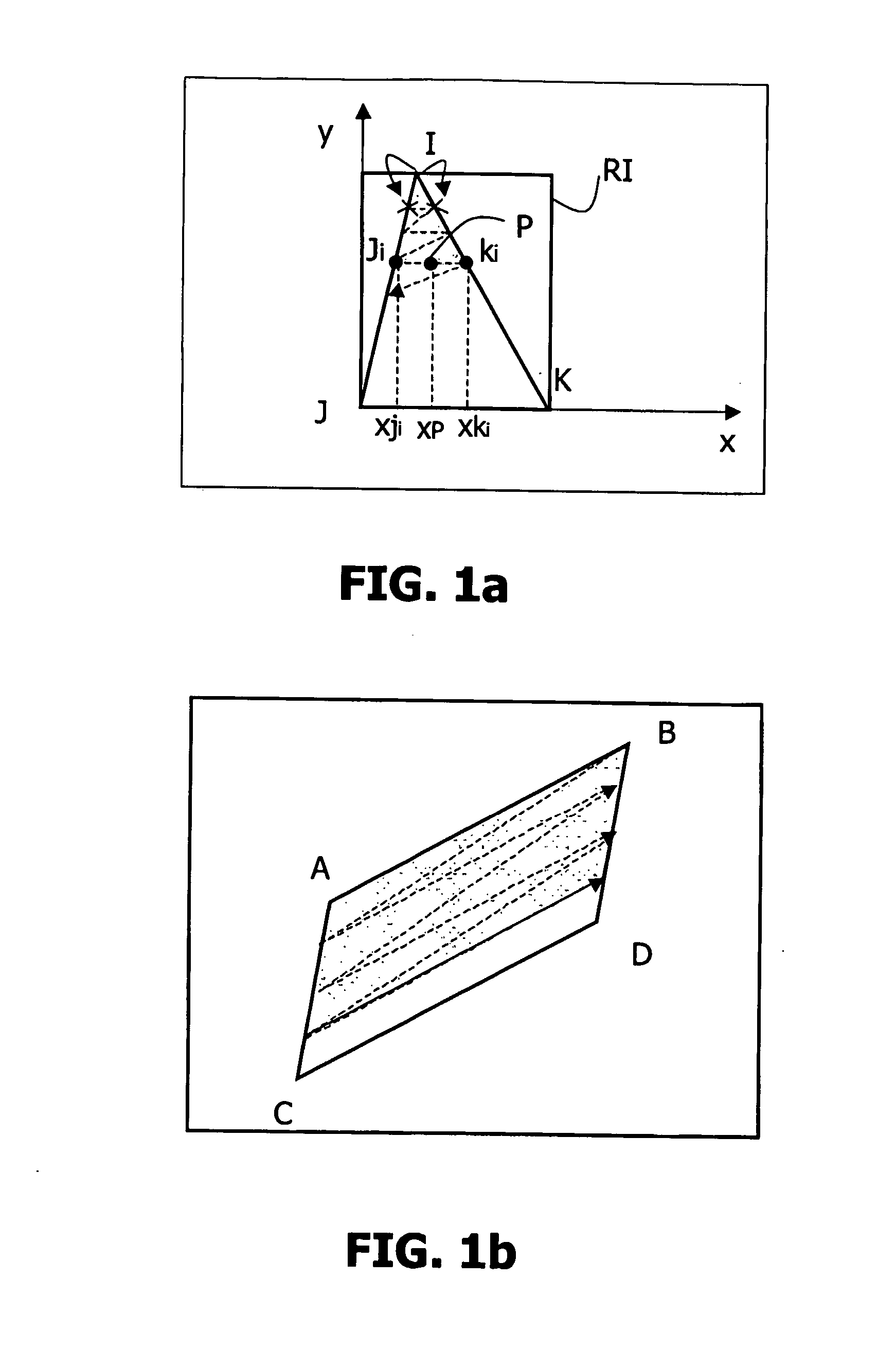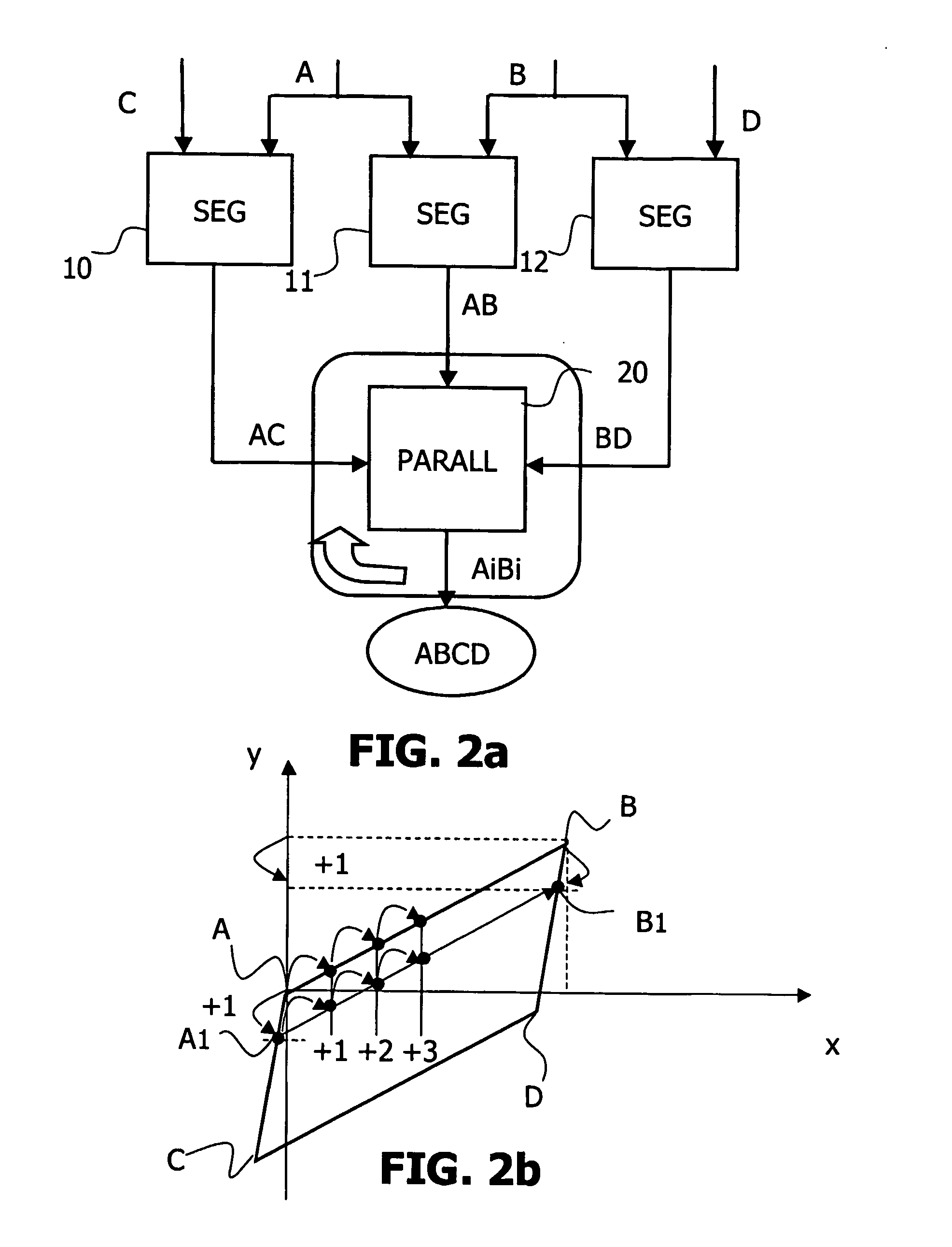Method and system for filling in a parallelogram
a parallelogram and filling technology, applied in the field of filling in parallelograms, can solve the problems of complex representation, high memory space cost, and inability to use very practicality,
- Summary
- Abstract
- Description
- Claims
- Application Information
AI Technical Summary
Benefits of technology
Problems solved by technology
Method used
Image
Examples
first embodiment
[0051] In the invention, described by the functional diagram in FIG. 4 and illustrated by the example in FIG. 2b, said step 20 comprises a substep 21 of calculating the coordinates of a segment included between a point Ai belonging to the second segment AC and a point Bi belonging to the third segment BD, Ai and Bi being situated at the same distance from A and B respectively. The substep 21 is iterated in order to trace all the segments AiBi situated within the parallelogram ABCD and at equal distances from A and B respectively in a horizontal or vertical favored direction. In the example in FIG. 2b, the favored direction of the segments AC and BD is the vertical axis Ay. Starting from xA, the point A1 of the second segment AC is considered, such that yA1=yA+1 and the corresponding point B1 of the third segment BD, such that yB1=yB+1. The second and third segments AC and BD being parallel, the points A1 and B1 are at equal distances from A and B respectively along the axis Ay.
[0052...
second embodiment
[0056] In the invention, presented functionally in FIG. 6, step 20 comprises a substep 22 of translation of the first segment AB in a horizontal and vertical favored direction, intended to supply a translated segment included in the parallelogram ABCD. This translation subset 22 consists of calculating the coordinates of a segment parallel to the first segment AB by translation in a horizontal or vertical favored direction. FIG. 7a presents an example of horizontal translations of the segment AB along the axis Ax inside the parallelogram ABCD. Such translations are very simple to implement. Consider in fact a segment A′1B′1 translated horizontally by one unit in the direction of the positive x's. This gives simply xA′1=xA+1 and yA′1=yA. In this way, all the possible translated segments A′iB′i, such as xAA′≦xC are traced. A parallelogram 6 is formed. Only the points belonging to a surface 5 common to the parallelogram 6 with the parallelogram ABCD must be taken into account. To do th...
PUM
 Login to View More
Login to View More Abstract
Description
Claims
Application Information
 Login to View More
Login to View More - R&D
- Intellectual Property
- Life Sciences
- Materials
- Tech Scout
- Unparalleled Data Quality
- Higher Quality Content
- 60% Fewer Hallucinations
Browse by: Latest US Patents, China's latest patents, Technical Efficacy Thesaurus, Application Domain, Technology Topic, Popular Technical Reports.
© 2025 PatSnap. All rights reserved.Legal|Privacy policy|Modern Slavery Act Transparency Statement|Sitemap|About US| Contact US: help@patsnap.com



